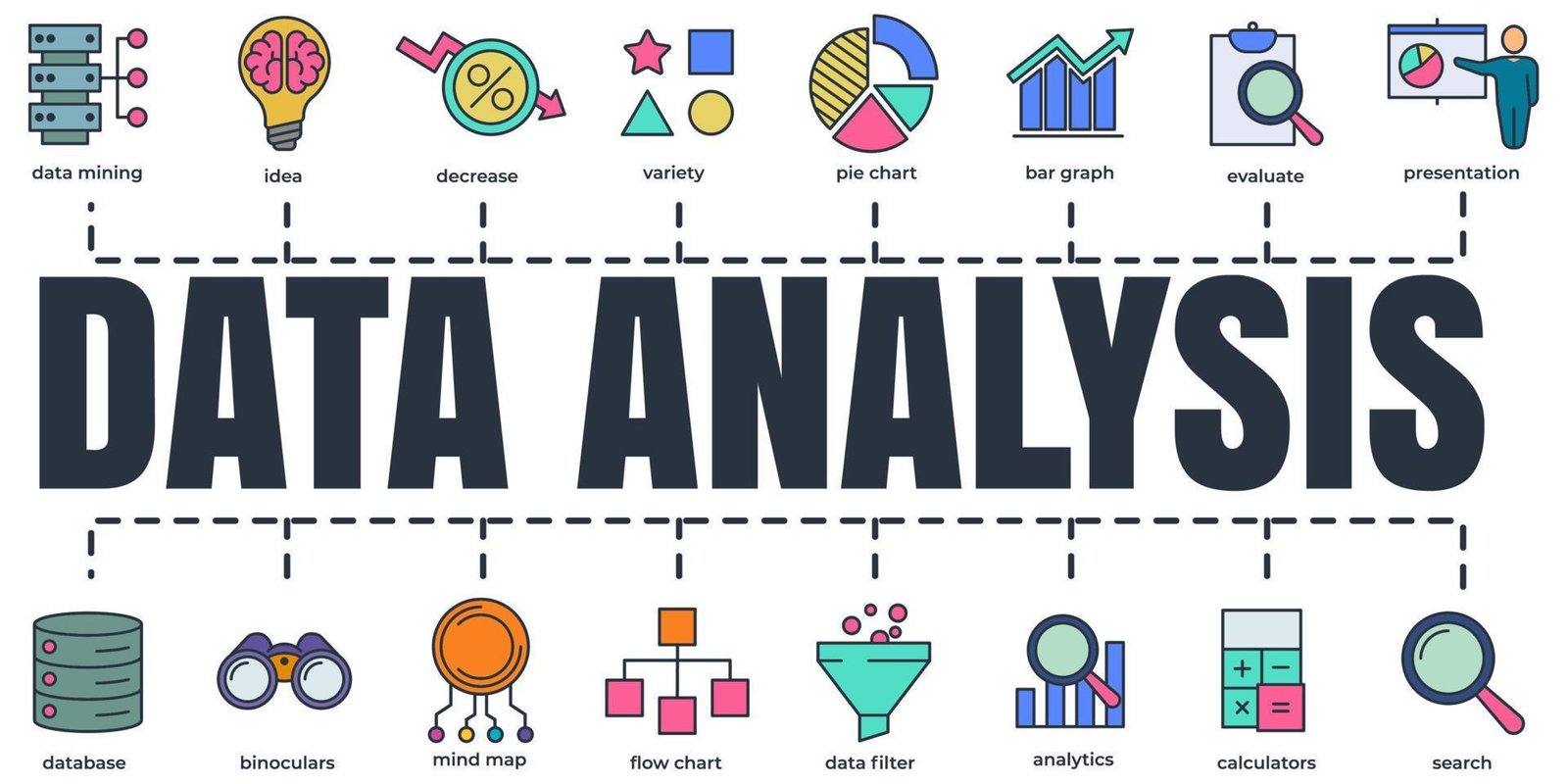
Analytics and Data Analysis
Analytics and Data Analysis in the context of digital marketing refer to the systematic examination of data generated by online activities to derive insights, make informed decisions, and optimize strategies. These processes are fundamental for understanding user behavior, measuring the performance of marketing campaigns, and refining overall digital strategies.
Key Components of Analytics and Data Analysis in Digital Marketing:
-
Data Collection: Gathering data from various digital channels, such as websites, social media platforms, email campaigns, and other online interactions. Data can include user interactions, website traffic, conversion rates, and more.
-
Data Processing: Organizing and cleaning collected data to ensure accuracy and relevance. This involves structuring data in a way that makes it easily understandable and usable for analysis.
-
Key Performance Indicators (KPIs): Defining and tracking KPIs that align with specific business goals. KPIs can include metrics like website traffic, conversion rates, click-through rates, engagement, and return on investment (ROI).
-
Tools and Platforms: Utilizing analytics tools and platforms, such as Google Analytics, Adobe Analytics, or custom-built dashboards, to gather, process, and visualize data. These tools provide valuable insights into user behavior and campaign performance.
-
User Behavior Analysis: Understanding how users interact with digital assets, such as websites or apps. This includes analyzing the customer journey, identifying touchpoints, and determining factors that influence user decisions.
-
Conversion Analysis: Evaluating the effectiveness of conversion paths, analyzing what drives users to take desired actions, and identifying potential barriers to conversion. This is crucial for optimizing the user experience and increasing conversion rates.
-
A/B Testing: Conducting experiments by comparing two versions (A and B) of a webpage, email, or ad to determine which performs better. A/B testing helps optimize elements like headlines, visuals, or calls-to-action based on data-driven insights.
-
Segmentation: Dividing data into segments based on specific criteria, such as demographics, geographic location, or user behavior. Segmentation allows for more targeted analysis and personalized marketing strategies.
-
Predictive Analytics: Using statistical algorithms and machine learning to predict future trends, user behavior, or the outcomes of marketing campaigns. Predictive analytics helps businesses make proactive and strategic decisions.
-
Reporting: Creating regular reports and dashboards to communicate insights and performance metrics to stakeholders. Reporting is essential for monitoring progress, demonstrating the impact of marketing efforts, and guiding decision-making.
-
Continuous Improvement: Using data analysis to identify areas for improvement in digital marketing strategies. This involves refining tactics, optimizing campaigns, and adapting to changing market conditions based on data-driven insights.
Analytics and data analysis empower digital marketers to move beyond intuition and make decisions grounded in evidence. By extracting meaningful insights from data, businesses can enhance the effectiveness of their digital marketing efforts, allocate resources efficiently, and stay agile in a rapidly evolving digital landscape.
